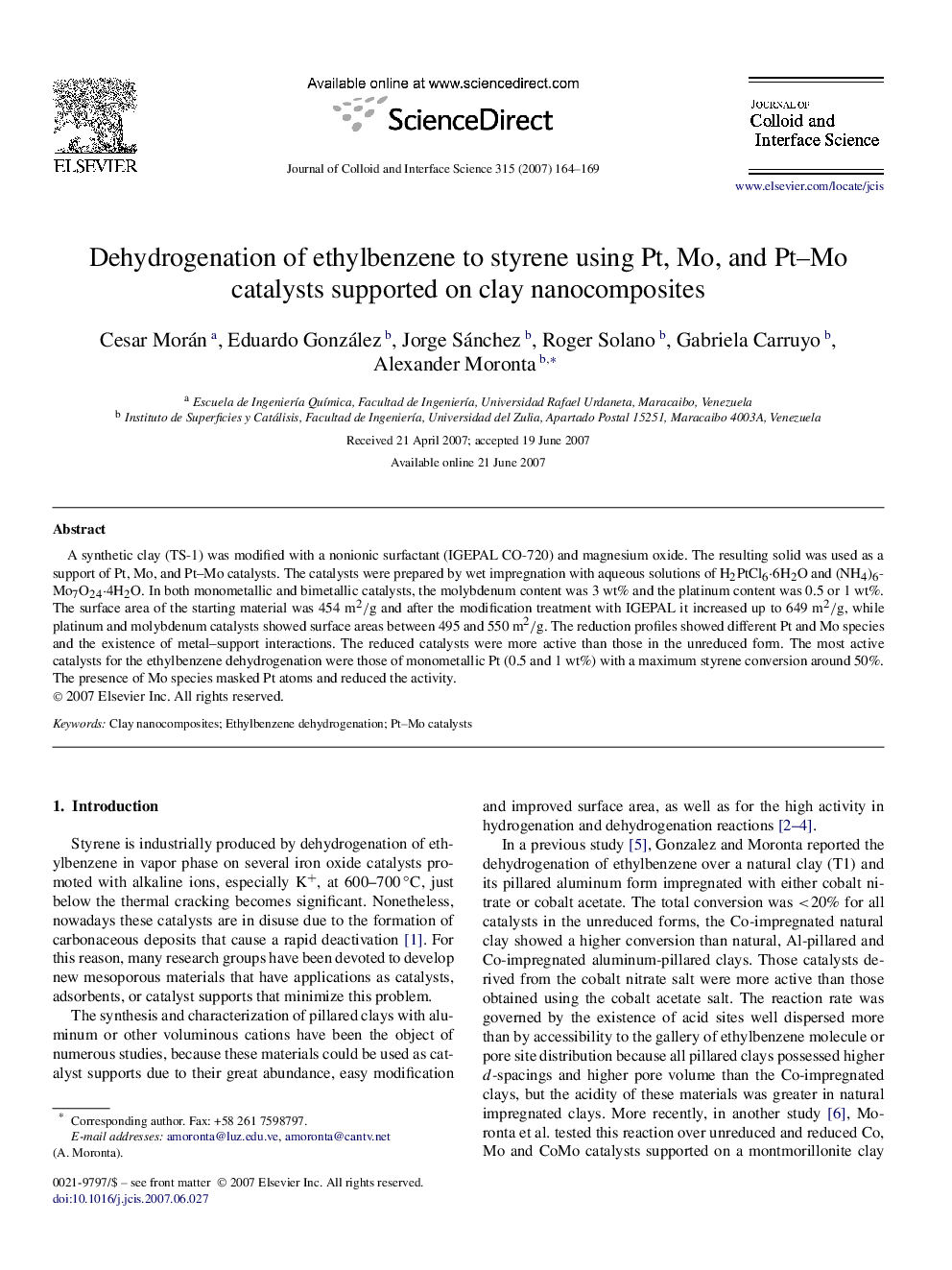| کد مقاله | کد نشریه | سال انتشار | مقاله انگلیسی | نسخه تمام متن |
|---|---|---|---|---|
| 612273 | 880694 | 2007 | 6 صفحه PDF | دانلود رایگان |

A synthetic clay (TS-1) was modified with a nonionic surfactant (IGEPAL CO-720) and magnesium oxide. The resulting solid was used as a support of Pt, Mo, and Pt–Mo catalysts. The catalysts were prepared by wet impregnation with aqueous solutions of H2PtCl6⋅6H2O and (NH4)6-Mo7O24⋅4H2O. In both monometallic and bimetallic catalysts, the molybdenum content was 3 wt% and the platinum content was 0.5 or 1 wt%. The surface area of the starting material was 454 m2/g and after the modification treatment with IGEPAL it increased up to 649 m2/g, while platinum and molybdenum catalysts showed surface areas between 495 and 550 m2/g. The reduction profiles showed different Pt and Mo species and the existence of metal–support interactions. The reduced catalysts were more active than those in the unreduced form. The most active catalysts for the ethylbenzene dehydrogenation were those of monometallic Pt (0.5 and 1 wt%) with a maximum styrene conversion around 50%. The presence of Mo species masked Pt atoms and reduced the activity.
The dehydrogenation of ethylbenzene is an important reaction to produce styrene, which is the raw material to the manufacture of polystyrene. This reaction is carried out industrially several iron oxide catalysts promoted with alkaline ions, especially K+, at 600–700 °C.Figure optionsDownload as PowerPoint slide
Journal: Journal of Colloid and Interface Science - Volume 315, Issue 1, 1 November 2007, Pages 164–169